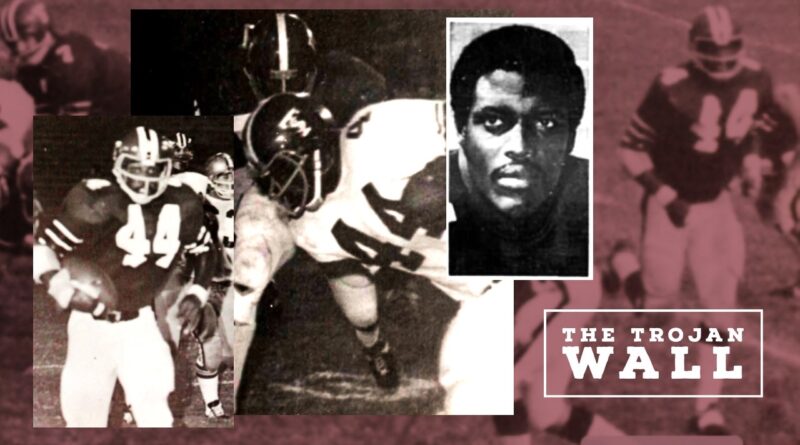The Sacrifice of Cliff Dunham: Why Troy’s First Black Player Walked off the Field
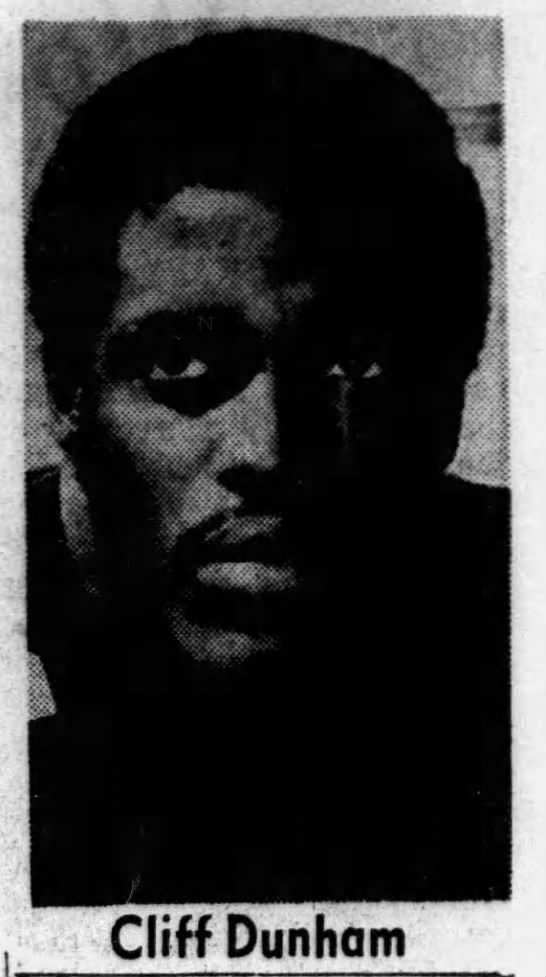
The story of integration in Alabama is well-documented. We’ve seen images of the screaming, the violence, and the standing in schoolhouse doors. While some of the state’s first Black students are remembered, such as Autherine Lucy at the University of Alabama in 1956, some names attached to smaller schools are less well-known.
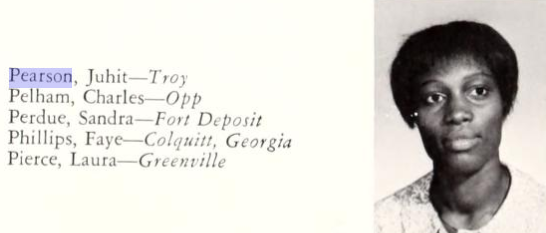
The first Black student in Troy State records was Juhit Pearson of Troy. Her photo is in the junior section of the 1968 Palladium, meaning she was a sophomore in 1967. If her freshman year was the previous year, 1966, there is no record of her in that year’s Palladium yearbook. Also featured in the 1968 Palladium is a freshman named James Paul. These two are the first Black students with Palladium photos.
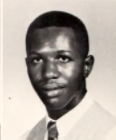
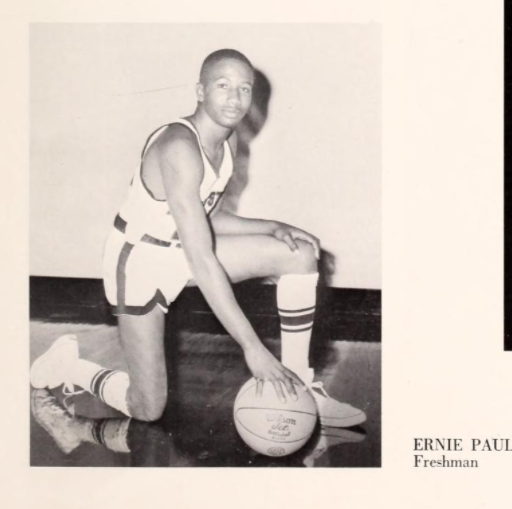
The lovely folks over at “The Troy Trojans Connection” Facebook group revealed the first Black athlete at Troy was freshman basketball player Ernie Paul in 1966. His photo was featured in the basketball section of the yearbook, but not in the student photos.
This was the stage of campus life that Cliff Dunham stepped onto when he enrolled as the first Black football player in Troy’s history. Being the first Black player at any school is a monumental undertaking, even more so in the Deep South.
The University of Alabama, along with other Southern schools, would famously refuse to play against integrated teams throughout the 1950s and 1960s. The legend goes that, while Bear Bryant was ready to integrate his own team, he knew his fans weren’t. Bryant scheduled already-integrated USC to play Bama in Birmingham in 1970. With Alabama native Sam “Bam” Cunningham, the western Trojans ran all over Alabama. The Tide officially integrated the very next year, the same year as the Troy State Red Wave.
Bama and Troy State were actually the last major Alabama teams to integrate. North Alabama had two players take the field in 1968. West Alabama, Jacksonville State, and Samford followed in 1969. Auburn had James Owens in 1970. In 1971, Wilbur Jackson and John Mitchell put on the Crimson for the first time, while Troy coach Billy Atkins brought in Dunham.
Cliff Dunham grew up in Columbus, Georgia and graduated from Baker High School there. He was a member of both the track team and the football team. In 1968, he was selected as an alternate for the South All-Stars in the Georgia All-Stars football game.
Dunham graduated that year and went to the University of Colorado, where he redshirted. After spending the 1969 and 1970 seasons as a Buffalo and switching to inside linebacker, Cliff decided to come back home.
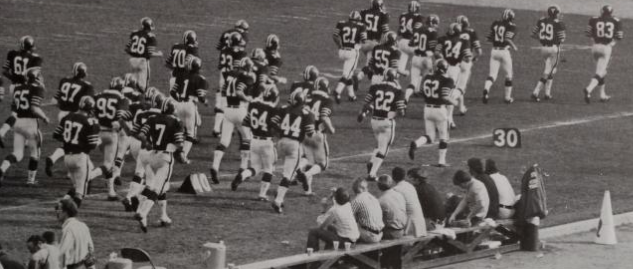
He transferred to Troy State for the 1971 season, enticed by being in the backfield again. Coach Billy Atkins was excited for the move, saying Dunham “has excellent speed and all the moves, but more important, he has that extra desire that a top running back must have.” It’s worth noting that Dunham ran a 4.6-second 40 yard dash.
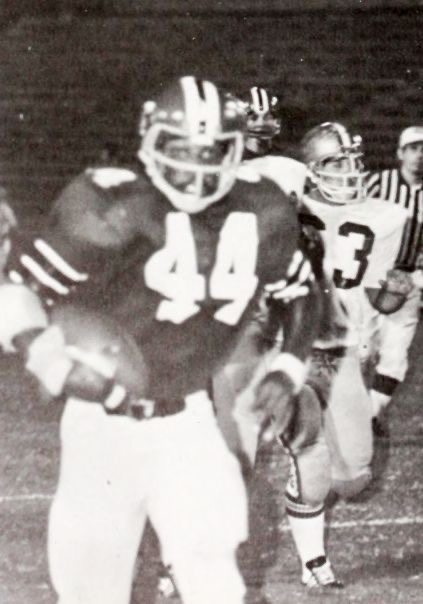
The plan was to have Dunham split carries with Bill Ragle, Troy’s fullback and rushing leader from 1970 (399 yards), creating a consistent ground attack to go along with the passing attack led by Harold Hogan. The plan worked very well.
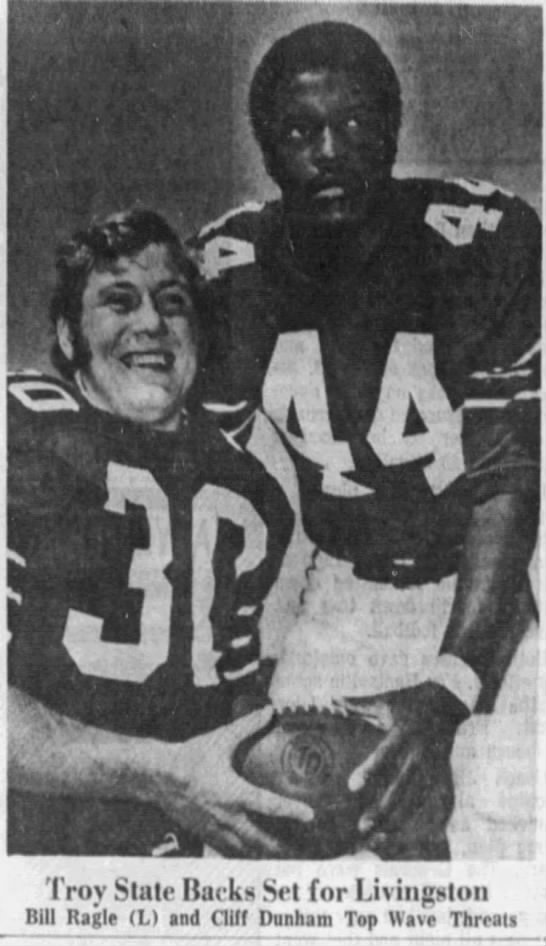
Dunham led the team with 477 yards and added another 102 either through receiving yardage or returns (The records are not clear.). The trio of Hogan, Dunham, and Ragle led the Red Wave to a 6-3 record and a share of the first Gulf South Conference Championship—the first of six GSC titles Troy State won.
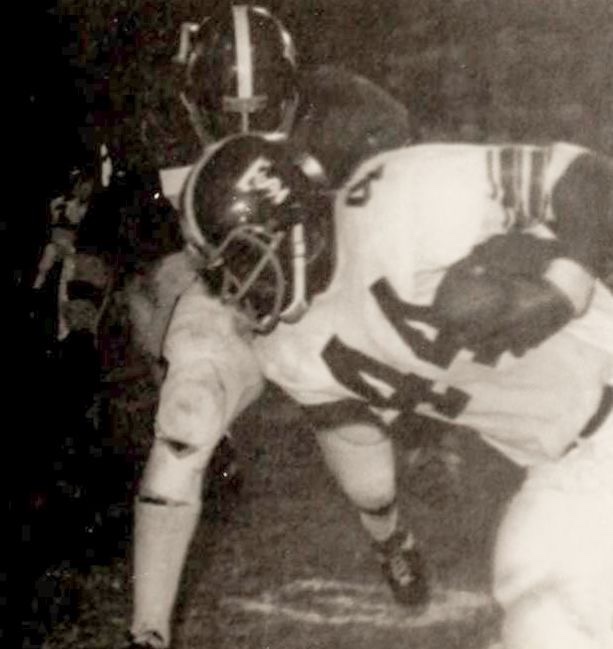
Dunham won the best offensive back award at the Troy football banquet that year. He was one of the best rushers in the Gulf South Conference that season. Dunham even announced that he was going to be joining the Marines after graduating from Troy in 1973.
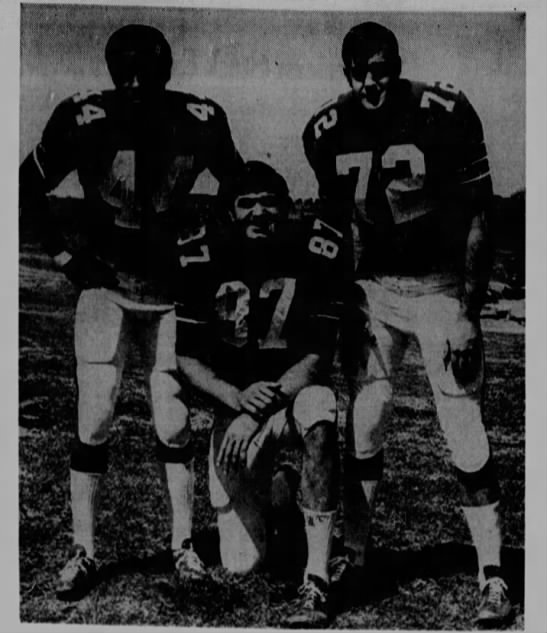
Everything seemed to be going up for Dunham heading into the 1972 season. The biggest change, however, would be at the head coach position.
National Championship Head Coach Billy Atkins would join Lou Saban’s staff at the Buffalo Bills in January of that year. A couple of days later, Tom Jones from Auburn was hired as the athletic director and head coach at Troy State.
All signs pointed to another strong season for the Red Wave with all 11 offensive starters returning and 9 on defense. The 1972 campaign began strongly with a 28-24 win over Elon in Montgomery, followed by a blowout win over Austin Peay in Dothan.
Then the wheels fell off.
Troy would drop the first GSC game of the season to West Alabama 14-3. By this point, Dunham had 107 yards and two touchdowns, putting him second in rushing for the season.
That 1971 season would also be the first season that four major sports at Troy were integrated, with Black players making up portions of the rosters in football, basketball, cross country, and track.
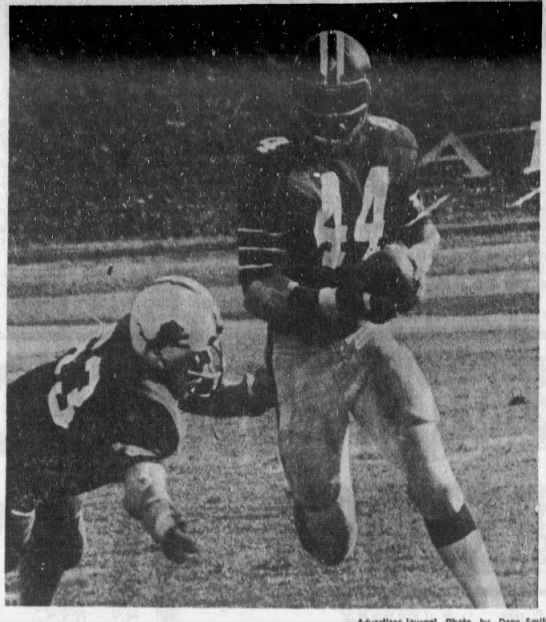
By 1972, the players believed they were being unfairly targeted by rules created by the administration, such as rules requiring certain haircuts, as well as, no mustaches during the season. They also argued they were receiving inferior medical treatment and inadequate playing time when compared to their white teammates.
By the end of September, tensions between players and administration were high. The next game, Cliff Dunham went from the record books to the history books.
Dunham and five other football players staged a walkout during the Ouachita Baptist game on September 30, 1972. The score was tied 0-0 at halftime and the players went to the locker room with the rest of their teammates.
As the rest of the team worked on adjustments, Dunham, along with Lindsay Plummer, Herman Daniel, Rick Buckman, Mike Echols, and Binston Boyd, changed into street clothes and refused to finish the game. The protest was intended only to be a visible outlet for their frustrations to the students and faculty of Troy.
Coach Jones said that the players did not want to play and promptly kicked them off of the team. Jones maintained that the players had not been treated any differently than his white players and refused to negotiate.
In turn, Jones refused to listen to the players at all, creating a tense situation. He would not allow them back on the squad, leading to the loss of their scholarships.
Dunham said Jones misinterpreted the walkout, stating that the players wanted to play, but the walkout was needed “to air grievances and for the benefit of future blacks at Troy.” Dunham even maintained the protest was never aimed at any specific coach at Troy, but the system that had been created instead.
Eventually, the walkout grew into a formal protest at the state Capitol in Montgomery. “The Ouachita Six” were joined by 40 other Black members of Troy State sports programs and the student body.
These students were led in part by track athlete Miller Woodson who helped to organize the Oct. 4 protest. It showed galvanized support for the players and drew press coverage to the issues from as far west as Arizona through a UPI wire story.
During the protest, the players stated that their grievances with the Athletics Department focused on three areas: inadequate academic counsel, unfulfilled promises to Black players on the nature of their scholarships, and improper utilization of players.
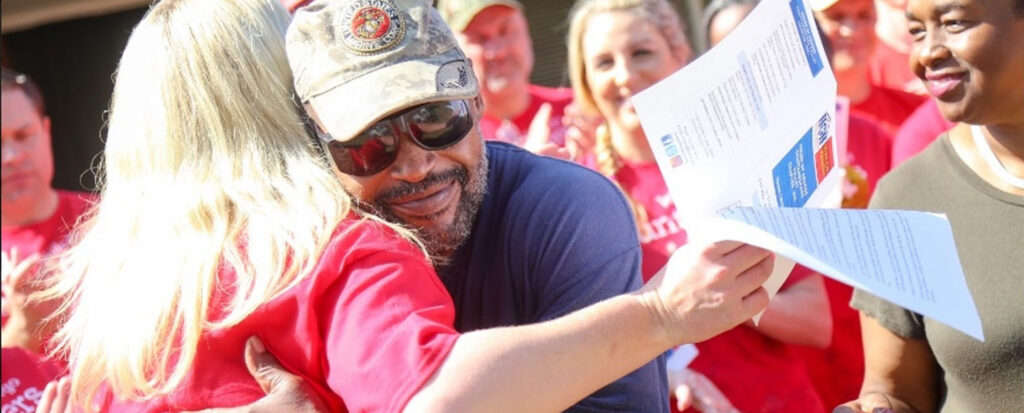
After the news stories on October 5, 1972 covering the protest, information on Cliff Dunham dries up fast. I could find no record of him finishing his degree. A Wells Fargo article featuring him and his wife did show him wearing a Marines hat, so it appears he was able to follow through on that goal.
We have reached out to his family for an interview and hope to bring that to you soon.
Dunham’s impact on Troy is hard to see by looking at the record books. His name only shows up four times in the media guide.
That’s not his legacy though. Dunham’s role as a pioneer for Black athletes, and the sacrifice he made to stand up for himself and those who followed him are far more important than any stat sheet.
The upcoming football season happens to be the 50th anniversary of the Ouachita Six walkout. It’s incredible to see the progress Troy State has made since, but we owe it to Cliff Dunham to honor his sacrifice and continue down that path.

